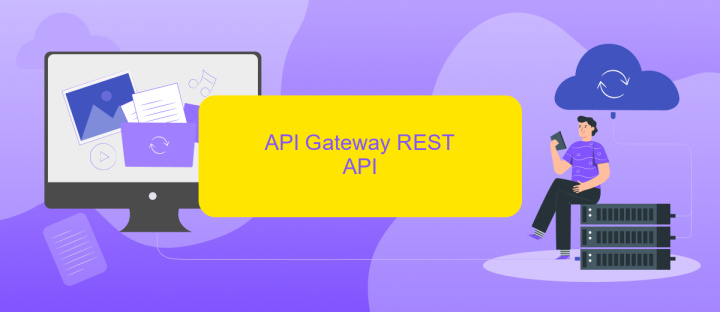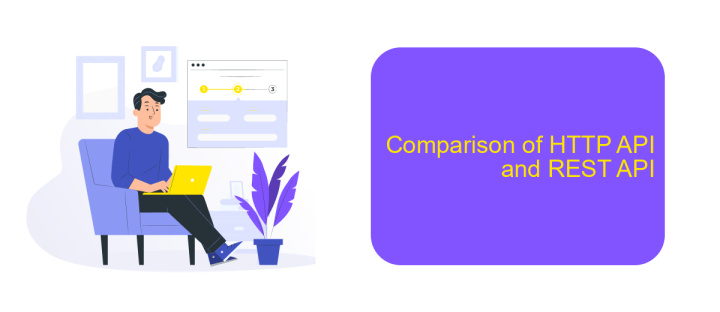Amazon Api Gateway HTTP Vs Rest
Choosing the right API Gateway is crucial for the performance and scalability of your applications. Amazon API Gateway offers two main types: HTTP APIs and REST APIs. This article delves into the differences between these two options, helping you understand their unique features, use cases, and how to make an informed decision that best suits your project's needs.
Introduction
Amazon API Gateway is a powerful service that enables developers to create, publish, maintain, monitor, and secure APIs at any scale. When it comes to choosing the right type of API, developers often face the decision between HTTP APIs and REST APIs. While both serve the purpose of API management, they have distinct features and use cases that can significantly impact your application's performance and cost.
- HTTP APIs: Designed for low-latency, cost-effective scenarios.
- REST APIs: Feature-rich, suitable for complex integrations.
- Integration Services: Tools like ApiX-Drive can streamline the setup process.
Understanding the differences between HTTP and REST APIs in Amazon API Gateway is crucial for making informed decisions. While HTTP APIs offer simplicity and lower costs, REST APIs provide a more comprehensive set of features. Additionally, integration services such as ApiX-Drive can facilitate seamless connectivity and automation, making it easier to manage your API workflows efficiently.
API Gateway HTTP API

Amazon API Gateway HTTP API is a powerful tool designed to create, manage, and deploy HTTP-based APIs. It offers a simplified and cost-effective approach compared to the traditional REST API. HTTP APIs support OIDC and OAuth 2.0 authorization, making them ideal for modern applications that require secure access control. Additionally, they provide native support for CORS, which simplifies the process of integrating with web applications.
Setting up integrations with HTTP APIs is streamlined, especially when using third-party services like ApiX-Drive. ApiX-Drive facilitates seamless connections between various applications and services, allowing you to automate workflows without extensive coding. This can significantly reduce the time and effort needed to configure and maintain integrations, enabling faster deployment and iteration of your APIs. By leveraging HTTP APIs and services like ApiX-Drive, you can build scalable, secure, and efficient APIs tailored to your business needs.
API Gateway REST API

Amazon API Gateway REST API is a fully managed service that makes it easy for developers to create, publish, maintain, monitor, and secure APIs at any scale. It allows for the creation of RESTful APIs that enable communication between client applications and backend services. REST APIs in API Gateway support various features, including request/response transformation, client certificate validation, and API versioning.
- Define Resources and Methods: Create resources and methods to represent your API endpoints.
- Set Up Integrations: Connect your API methods to backend services such as AWS Lambda, HTTP endpoints, or other AWS services.
- Deploy API: Publish your API to a stage to make it accessible to clients.
- Monitor and Manage: Use tools like CloudWatch to monitor API performance and troubleshoot issues.
To simplify the integration process, consider using services like ApiX-Drive. ApiX-Drive offers a user-friendly platform to automate data transfer between different services and applications, reducing the complexity of manual API integration. This can be particularly useful for managing multiple API connections and ensuring seamless data flow between systems.
Comparison of HTTP API and REST API

Amazon API Gateway offers two types of APIs: HTTP API and REST API. While both serve to facilitate communication between clients and services, they have different use cases and performance characteristics.
HTTP APIs are designed to be simple, cost-effective, and efficient for creating web APIs. They provide lower latency and can handle high request rates, making them ideal for modern web applications. REST APIs, on the other hand, offer more features and flexibility, such as API keys, request validation, and usage plans, which can be beneficial for more complex integrations.
- Cost: HTTP APIs are generally cheaper than REST APIs.
- Performance: HTTP APIs offer lower latency and higher throughput.
- Features: REST APIs provide more advanced features like API keys and request validation.
- Use Case: HTTP APIs are suitable for simple, high-performance web applications, while REST APIs are better for complex integrations requiring advanced features.
When setting up integrations, tools like ApiX-Drive can simplify the process by automating data transfer between various services, whether you choose HTTP or REST APIs. This can save time and reduce the complexity of managing multiple API connections.
Choosing the Right API Type
When deciding between Amazon API Gateway HTTP and REST APIs, it's crucial to consider your specific use cases and requirements. HTTP APIs are designed for low-latency, cost-effective API solutions that are easy to set up and manage. They are ideal for building APIs that require high performance and minimal configuration. On the other hand, REST APIs offer more advanced features like API keys, request validation, and usage plans, making them suitable for more complex integrations and scenarios where security and control are paramount.
In addition to the inherent capabilities of each API type, leveraging third-party services like ApiX-Drive can further streamline your integration process. ApiX-Drive provides a user-friendly platform for automating data transfers between different systems, which can be particularly beneficial if you're dealing with multiple APIs and need a unified solution. By integrating ApiX-Drive, you can simplify the management of your API workflows, ensuring seamless data synchronization and reducing the overhead associated with manual configurations.
FAQ
What is the difference between Amazon API Gateway HTTP APIs and REST APIs?
When should I use HTTP APIs instead of REST APIs?
Can I migrate from REST APIs to HTTP APIs?
How do I handle authentication and authorization in HTTP APIs?
What tools can I use to automate and manage my API integrations?
Apix-Drive will help optimize business processes, save you from a lot of routine tasks and unnecessary costs for automation, attracting additional specialists. Try setting up a free test connection with ApiX-Drive and see for yourself. Now you have to think about where to invest the freed time and money!

